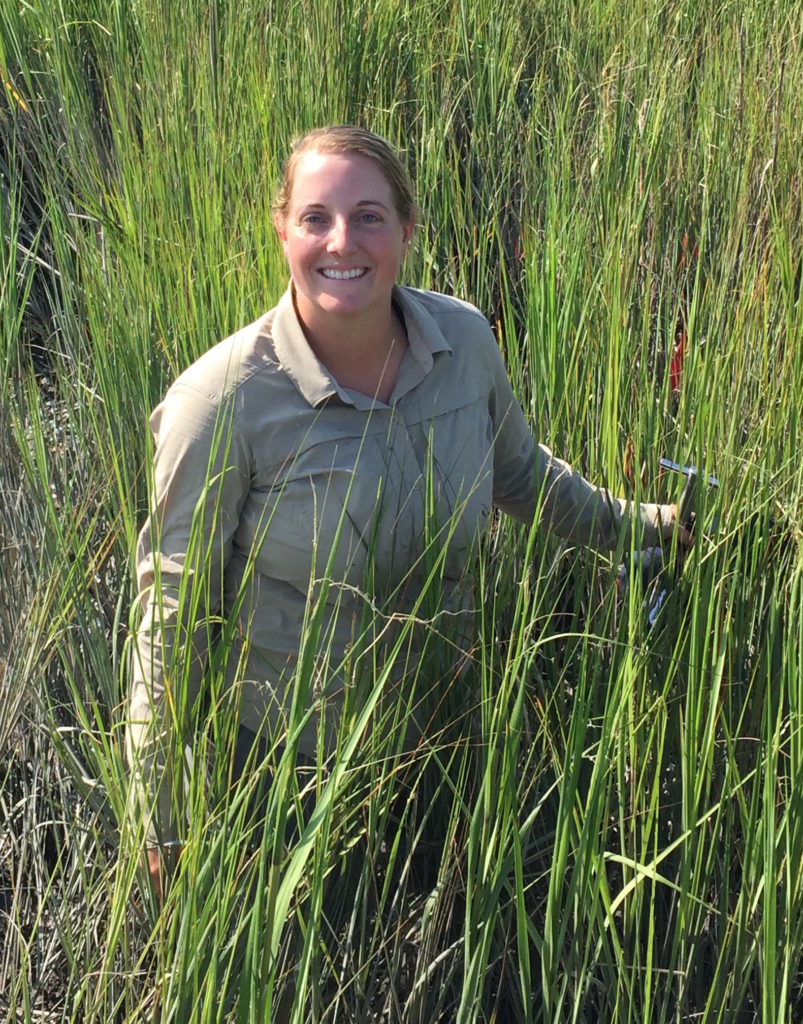
Ph.D. Candidate, Virginia Institute of Marine Science
2019 Conference Travel Grant Type 2 (Coastal & Estuarine Research Federation)
When plants fight back: the role of plant traits in preventing marsh loss
“U.S. Atlantic saltmarshes are dominated by smooth cordgrass, Spartina alterniflora, and are threatened by rapidly increasing sea level. Sea-level rise forces salt marshes to either migrate inland or accrete sediments to keep pace with the rising sea. The rate of accretion can be directly affected by herbivore consumption of S. alterniflora biomass, decreasing sediment deposition and hurting the marsh’s ability to outpace sea-level rise. Significant herbivory can cause large patches of bare mudflat, however, in some marshes these denuded areas are being re-vegetated and remain ungrazed. We hypothesized that following an herbivory event, alterations in the traits of recovering S. alterniflora cause the tissue to become unpalatable, deterring further grazing. To examine this, composite samples of S. alterniflora were collected from re-vegetated and ungrazed patches at eight sites within two salt marshes. Collected plants were analyzed for C:N, soluble protein, total phenolics, fiber, and silica content, as alterations in these nutritive and structural variables are predictors of forage quality and can influence herbivory. Our results show that S. alterniflora from re-vegetated areas had lower soluble protein and higher C:N, total phenolics, fiber, and silica content than ungrazed tissues. These results follow our predictions and may explain why re-vegetated areas of these marshes are not being grazed further. A lack of herbivory in re-vegetated areas will allow the marsh to continue to accrete sediments, facilitating marsh resilience to sea-level rise.”
